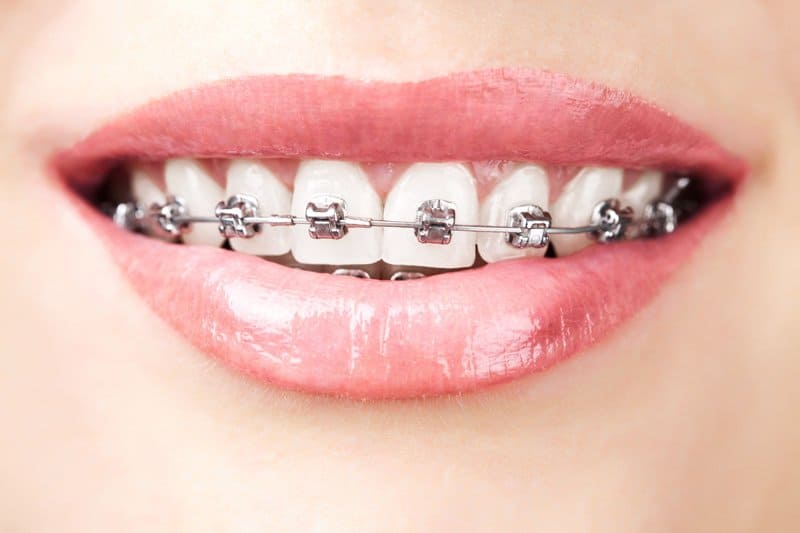Generally speaking, Idaho Falls Orthodontic Treatment is a special type of dental care that is used to fix positioning issues with a person’s teeth or jaw. There are many types of dental problems that can lead to the need for orthodontic care, and you’ll find some of them listed below. Orthodontic care often begins in the early teens, but is being used on adults more and more often these days.
But why is orthodontic care so important? For some people, the only negative impact of crooked teeth is that it detracts from their appearance. This by itself can be harmful to a patient’s self-esteem. For others, however, their dental problems can lead to even bigger problems. For example, crooked teeth or teeth that are out of line can be hard to clean. This can lead to tooth decay or periodontal (gum) disease that in turn leads to tooth loss. Another example is that misaligned teeth can lead to too much stress being put on the muscles in and around the jaw area. This type of stress can cause headaches, TMJ (temporomandibular joint) syndrome, and pain in the neck, shoulders, or back.
As you’ll see below, there is a wide range of orthodontic problems, and it’s important to get the right care. A good orthodontist will be able to select the exact right treatment for each patient. And while early care can prevent future problems, it’s never too late for orthodontic correction.
When is Orthodontic Treatment Needed?
While many people think of braces and other Idaho Falls orthodontic treatments as being for teens, that isn’t always the case. Yes, pre-teens and teens often need orthodontic treatment as their permanent teeth are coming in. However, the American Association of Orthodontists (AAO) suggests that an orthodontic check-up take place no later than age 7. 2
This kind of check-up can uncover early signs of future problems. If a problem is found during this check-up, early treatment can be started to prevent more serious problems from developing. These early treatments can guide jaw growth, correct harmful habits, and guide permanent tooth growth.
Despite this early screening, most patients won’t need treatment until their adult teeth have come in. Of course, each patient is unique and will lose baby teeth and get permanent teeth at their own rate. For most patients, Idaho Falls orthodontic treatment will begin between the ages of 11 and 13.
Common Dental Issues Treated by Orthodontic Treatment in Idaho Falls
These are some of the most common dental problems treated by orthodontists.
- Overbite – Upper teeth stick out too far over the lower teeth, resulting in a “bucktooth” appearance.
- Underbite – Lower teeth are positioned forward of the upper teeth, resulting in a “bulldog” appearance.
- Crossbite – Teeth do not align correctly when the mouth is closed, placing them too close to the tongue and/or cheek.
- Open Bite – Some teeth do not meet when the jaw is closed.
- Spacing Issues – Teeth are too close together or too far apart, creating crowding or gaps.
- Misplaced Midline – Center of upper and lower teeth don’t match up when the mouth is closed.
Less Common Issues That May Be Corrected by Orthodontics
- Jaw or TMJ Pain
- Speech Impediments
- Difficulty Chewing and Eating
- Sleep Apnea Caused by Snoring or Mouth Breathing
- Clenching or Grinding of Teeth
Common Orthodontic Treatments in Idaho Falls

There is a wide range of treatments that can be used to treat orthodontic problems. You’ll find that the extent of the dental problem will often dictate the type of treatment that will be needed. Each patient should work with their doctor to find the right procedure for their dental problems. Let’s take a look at some of the types of orthodontic treatment that are available.
Braces
When most people think of orthodontics, they think of traditional metal braces. Traditional braces are made of a set of metal brackets bonded to the teeth. The brackets are connected by wires that are tightened over time to gently move teeth into a better position. Thankfully, modern metal braces tend to be far more comfortable than older models. Colorful elastic bands, or ligatures, are often added to the brackets to create a fun, vibrant look.
In place of traditional metal brackets, an orthodontist may choose to use brackets made of a translucent material or ceramic that is colored to match the patient’s tooth enamel. These types of brackets are often used to provide a less obvious look than metal brackets offer. As with metal brackets, however, metal wires are used to move the teeth over time.
Generally, braces use ligatures or “o-rings” to connect a wire to the brace brackets. But there are also braces called “self-ligating” braces that don’t use these small rubber bands. Instead, these brackets are designed to clip directly to the guiding wires. These types of brackets can also be made of different materials.
Retainers
Another common Idaho Falls orthodontic treatment is a retainer. Unlike braces, most retainers are removable. They are crafted to be worn on the roof of the mouth and can be used to treat mild positioning problems or to keep teeth from moving out of position. Often, they will be worn after other orthodontic treatments have been completed. Removable retainers should be removed for eating, flossing, or brushing. On occasion, a permanent retainer may be bonded to the patient’s teeth to prevent dental shift over long periods of time.
Clear Aligners
For people who need relatively simple orthodontic treatment in Idaho Falls, clear aligners like Invisalign® may be used. Clear aligners use a series of trays to gently move teeth into a new position over time. Every week or two the patient changes to a new aligner tray that moves their teeth a little bit closer to their final position. Of course, these aligners can be removed to make eating, flossing, and brushing easier.
This type of treatment is often used on adults who have minor corrections that need to be treated. The clear aligners are designed to fit close to the teeth and made of clear materials that make them nearly invisible.
Orthodontic Surgery
When patients need to have extreme corrections made, orthodontic surgery may be necessary. This type of surgery can be used to straighten or realign the jaw, correct skeletal deformities, or treat other severe bite problems. A trained oral surgeon may use surgical plates, screws, templates, or wires to help correct the problem.
Other Orthodontic Treatments in Idaho Falls
There are many treatments that can be used to help orthodontic patients. Some less common treatments include:
- Headgear
- Palatal Expanders
- Fixed Space Maintainers
- Removable Space Maintainers
- Jaw Repositioning Appliances
Some of the information found in this article originated from the following Sources:
1 https://www.colgate.com/en-us/oral-health/life-stages/teen-oral-care/what-is-orthodontics
2 https://www.aaoinfo.org/system/files/media/documents/Right_Time_for_Ortho-MLMS-hl.pdf
3 https://www.medicalnewstoday.com/articles/249482.php
4 https://www.dentalassociates.com/our-services/braces-orthodontics/treatment-options
5 https://www.verywellhealth.com/braces-and-orthodontic-treatment-1059330






